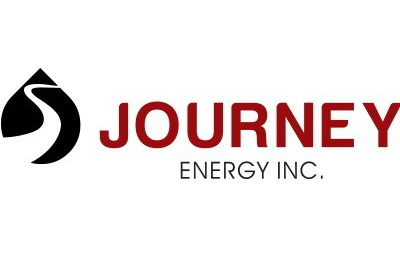Sign up for daily news updates from CleanTechnica on email. Or follow us on Google News!
De-coupled photovoltaic-thermal systems utilize liquid filters to absorb non-effective wavelengths, such as ultraviolet, visible light, and near-infrared. However, water, a popular filter, cannot effectively absorb ultraviolet rays, which limits system performance. To address this, researchers from Korea have introduced a novel emulsion filter which facilitates the conversion of solar energy into electricity and thermal energy simultaneously with an unprecedented 84.4% efficiency. (See infographic here.)
Photovoltaic (PV) modules are devices that convert sunlight into electrical energy. However, they suffer from a low conversion efficiency of around 20% because they can only convert near-infrared wavelengths into electricity, while other wavelengths simply heat up the PV module, reducing its efficiency. To counter this, scientists have developed photovoltaic-thermal (PVT) systems, in which the generated heat is carried away by a heat exchanger containing a coolant fluid (air or liquid). This, in turn, cools down the PV module, increasing its efficiency. Moreover, the captured heat can be utilized in the form of thermal energy.
To further enhance the cooling effect of PV modules and harvest thermal energy, de-coupled PVT systems equipped with liquid filters have been devised. These filters, placed over PV modules, capture specific wavelengths of sunlight that contribute minimally to electricity generation, including ultraviolet (UV), visible light, and near-infrared, facilitating their conversion into thermal energy for various applications. However, water, a popular liquid filter, cannot absorb UV rays.
Now, a team of researchers, led by Assistant Professor Jae Won Lee from Korea Maritime & Ocean University, has introduced an innovative emulsion (mixture) of fish oil and water as a liquid filter. It efficiently absorbs both infrared and UV light, increasing the energy harvesting potential of de-coupled PVT systems. Their work was made available online on April 28, 2023, and published in Volume 287 of the journal Energy Conversion and Management on July 1, 2023.
“Most liquid filters use either water or a mixture of water and solid nanoparticles to absorb the unused wavelengths of solar irradiance. However, water only absorbs the infrared portion of sunlight with wavelengths exceeding 1250 nm. Solid nanoparticles, on the other hand, tend to settle over time, which diminishes their efficiency,” points out Dr. Lee. In contrast, the proposed emulsion remains stable at high temperatures of up to 70 °C. Furthermore, the oil droplets within the emulsion are effective at absorbing UV light with wavelengths below 500 nm.
The presence of the emulsion filter significantly improved the conversion efficiency and lowered the operating temperature compared to systems with heat exchangers alone. The efficiency increased from 70.9% to 84.4%, while the temperature decreased from 46.7 °C to 33.1 °C. The researchers found that, under a standard solar irradiance of 1000 W/m², the de-coupled PVT system with emulsion filter produced electrical and thermal energies amounting to 72.2 Wh and 1176.7 Wh per day, respectively. This proved to be economically beneficial, with a lower cost payback time than both PVT systems and de-coupled PVT systems with water filter.
The proposed system can even be operated under specific requirements and environmental conditions. For example, during summer, the fluid in the liquid filter could be bypassed to maximize electricity production, while in winter, the liquid filter could capture thermal energy for heating applications. Its implementation is also expected to be straightforward. “Emulsion technology is already well established and finds applications in various industries, such as cosmetics and food,” explains Dr. Lee. “Therefore, emulsion filters can be easily applied to existing systems. Additionally, they hold immense potential for new applications, including selective separation of the solar wavelength spectrum.”
Let us hope that this technology will take us one step closer to realizing a carbon-neutral society!
Reference
About National Korea Maritime & Ocean University
South Korea’s most prestigious university for maritime studies, transportation science and engineering, the National Korea Maritime & Ocean University is located on an island in Busan. The university was established in 1945 and since then has merged with other universities to currently being the only post-secondary institution that specializes in maritime sciences and engineering. It has four colleges that offer both undergraduate and graduate courses.
Website: http://www.kmou.ac.kr/english/main.do
About the author
Dr. Jae Won Lee is an Assistant Professor in the Division of Mechanical Engineering at Korea Maritime & Ocean University (KMOU). He received his PhD in Thermal Engineering from Korea University in 2017. His group conducts experimental and theoretical, fundamental, and applied research to improve the performance of a wide range of thermal engineering systems. Before coming to KMOU, he was a Research Professor at the Energy and Materials Circulation Laboratory and contributed to building energy reduction research.
Courtesy of Korea Maritime and Ocean University, South Korea.
Have a tip for CleanTechnica? Want to advertise? Want to suggest a guest for our CleanTech Talk podcast? Contact us here.
EV Obsession Daily!
I don’t like paywalls. You don’t like paywalls. Who likes paywalls? Here at CleanTechnica, we implemented a limited paywall for a while, but it always felt wrong — and it was always tough to decide what we should put behind there. In theory, your most exclusive and best content goes behind a paywall. But then fewer people read it!! So, we’ve decided to completely nix paywalls here at CleanTechnica. But…
Thank you!
Tesla Sales in 2023, 2024, and 2030
CleanTechnica uses affiliate links. See our policy here.




